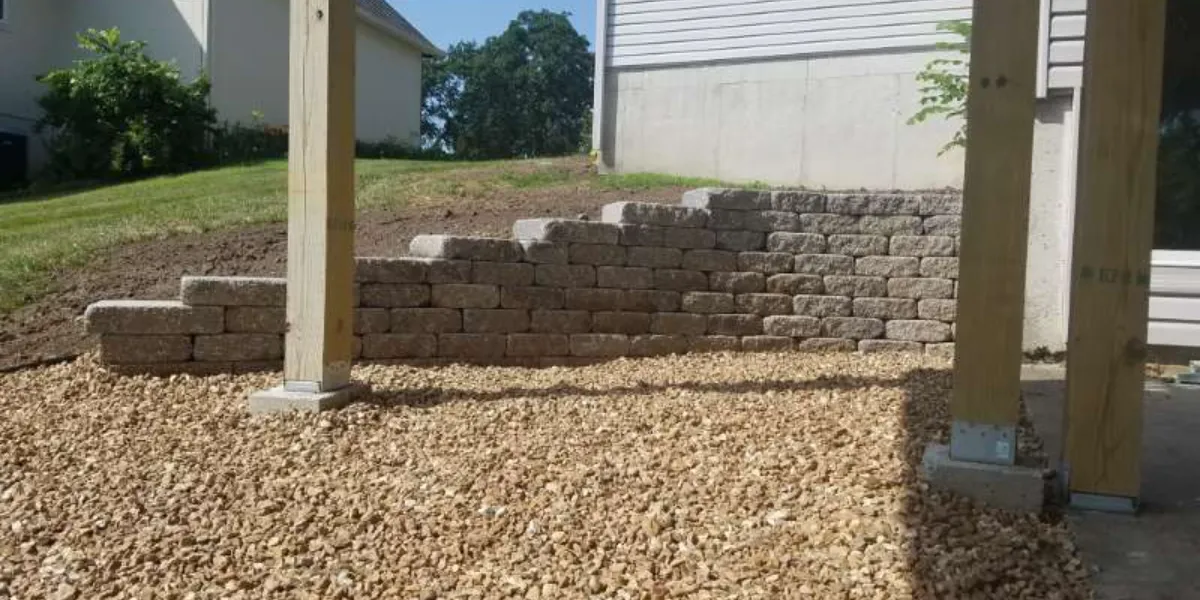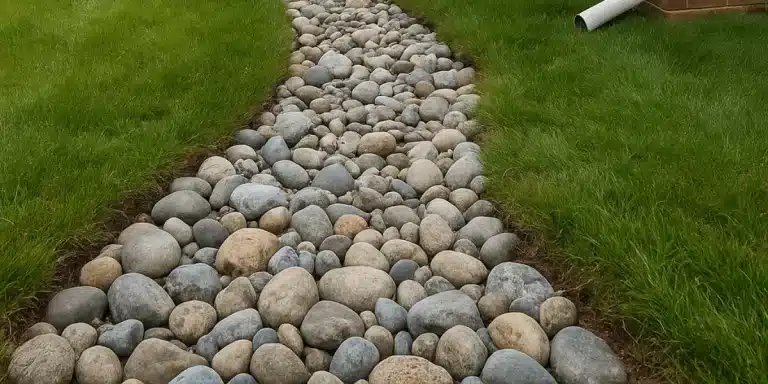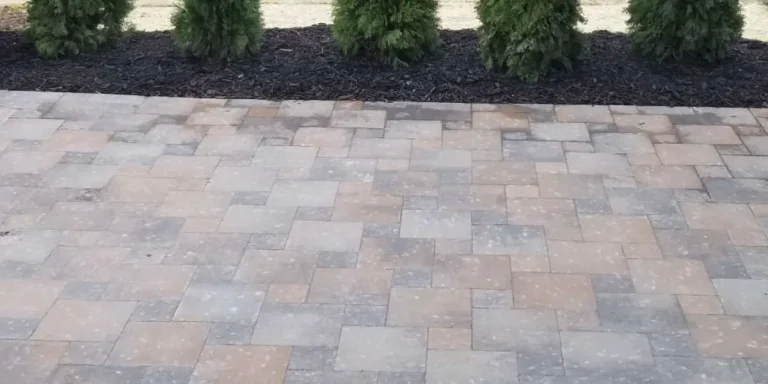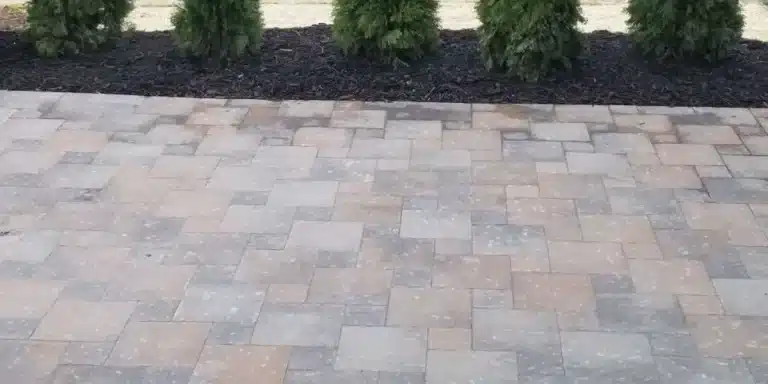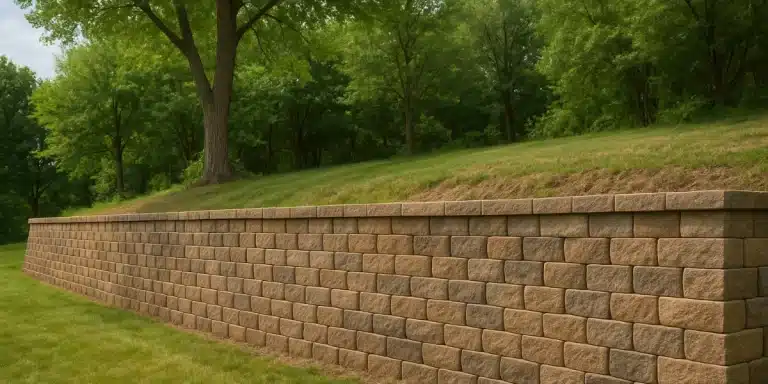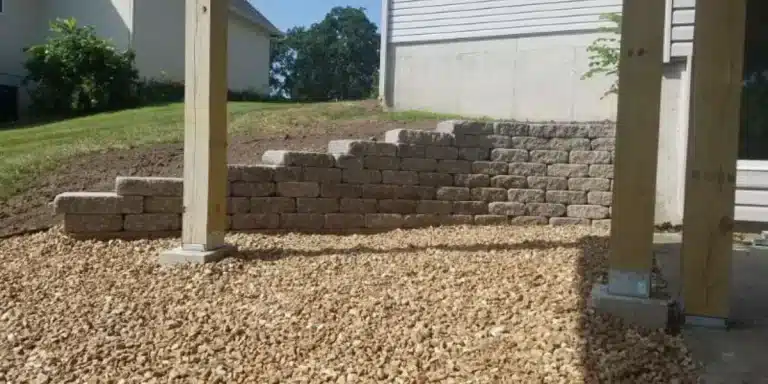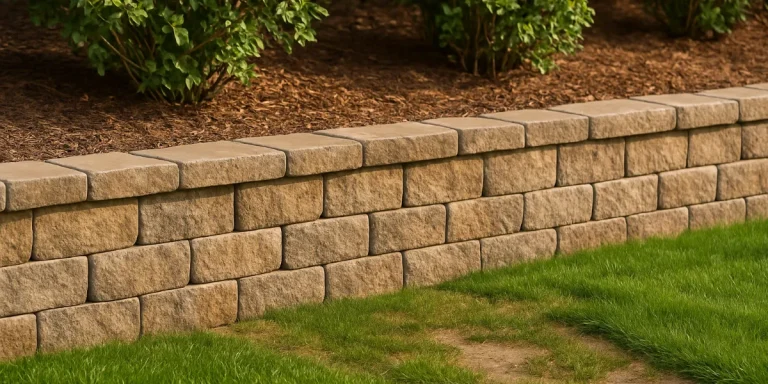Why Proper Drainage Is the Most Important Part of Any Retaining Wall
When it comes to building a retaining wall, many homeowners focus on the visual design, materials, and overall structure. But there’s one critical element that often goes overlooked—drainage. At S&T Landscaping, we’ve seen firsthand how improper drainage can ruin even the most well-built wall. If you’re planning to install or replace a retaining wall in Sedalia or the surrounding Missouri areas, understanding the importance of drainage could save you thousands in repairs down the road.
Why drainage matters in retaining wall construction
Retaining walls do more than just shape your yard—they manage serious structural loads. Whether you’re trying to prevent soil erosion, level out a slope, or build a multi-tiered landscape, your retaining wall needs more than strength. It needs a drainage plan.
Missouri properties, especially in areas like Sedalia, Warsaw, and Lake Ozark, often have clay-heavy soils that retain water. During a heavy rain, that water collects behind your wall and can’t escape unless there’s a clear path for it. When it builds up, it creates hydrostatic pressure—and that’s where problems begin.
What is hydrostatic pressure?
Hydrostatic pressure is the force exerted by water trapped behind the wall. Over time, this pressure can be just as destructive as poor construction or weak materials.
Here’s what it can cause:
-
- Bulging or leaning sections of the wall as water pushes outward
- Cracks in the wall face or along joints as materials shift under pressure
- Saturation and erosion of the base, weakening the foundation
- Wall failure or collapse in severe cases, especially after heavy storms
- Surface runoff issues that affect patios, driveways, or even your home’s foundation
Even small retaining walls can experience these issues if drainage is ignored.
Why this is especially important in Missouri
Missouri’s weather is a wildcard. You might have:
-
- Sudden, intense storms that dump several inches of rain in a short period
- Prolonged wet seasons that keep soil saturated for weeks
- Heavy clay soils that don’t drain well on their own
- Sloped yards where water naturally moves toward your retaining wall
Without built-in drainage, your wall becomes a dam—and over time, it will give way.
What drainage is not
Many homeowners assume that simply sealing the wall or using high-quality blocks will be enough. But:
-
- Water doesn’t care about materials—it follows gravity
- Waterproofing alone won’t relieve pressure
- Decorative walls are still vulnerable if water is allowed to collect behind them
Proper drainage isn’t an optional feature. It’s a system that includes:
-
- Perforated drain pipes (also known as French drains)
- Gravel backfill for rapid water movement
- Filter fabric to keep soil from clogging the drainage path
- Surface grading to direct runoff away from the wall
These components work together to relieve pressure and protect the wall from the inside out.
At S&T Landscaping, drainage comes first
We never build a retaining wall without addressing drainage. That means:
-
- Evaluating your yard’s slope and water flow patterns
- Choosing the right drainage system for your soil type and wall size
- Integrating the drainage during construction—not as an afterthought
It’s one of the main reasons our walls hold up for decades—even in tough Missouri weather.
Signs of poor drainage behind a retaining wall
If you already have a retaining wall on your property, watch for these red flags:
-
- Bulging or tilting wall sections
- Cracks in the wall face or along mortar joints
- Water stains or moss growing on the lower portion of the wall
- Puddles forming at the base
- Soil erosion or washouts near the wall
These symptoms often point to water buildup and poor drainage—and they won’t improve on their own.
Drainage solutions we use in every retaining wall project
At S&T Landscaping, we design every retaining wall to perform well long after it's built—not just to look good the day it's installed. A key part of that durability is the drainage system we build behind the wall. Without it, even the best-looking wall is vulnerable to long-term damage.
Here’s how we ensure every wall we build in Sedalia and surrounding areas is protected from the inside out:
1. Gravel backfill
Instead of compacting soil directly behind the wall (a major mistake), we use clean, angular crushed stone.
-
-
- Why it matters: Soil holds water. Crushed stone allows it to pass through quickly, minimizing pressure on the wall.
- How we install it: We backfill the wall with 12 to 18 inches of clean gravel, depending on the wall size and application.
- Additional benefits: Gravel also supports proper compaction and stability at the wall base, helping reduce settling or shifting over time.
-
2. Perforated drain pipe (also known as a French drain)
A perforated drain pipe collects excess water and safely moves it away from behind the wall.
-
-
- Where it goes: This pipe is installed at the base of the gravel zone, running the full length of the wall.
- Wrapped in fabric: To keep the pipe from clogging with sediment, we wrap it in landscape fabric before burial.
- Outlet strategy: The pipe is connected to a proper drainage outlet—either a pop-up emitter, daylighted slope, or existing drainage system—so water is discharged away from the structure.
-
This is especially important on longer or taller retaining walls where water buildup can be more intense.
3. Filter fabric barrier
Many wall failures are caused not by a lack of drainage pipe—but by clogged gravel.
-
-
- What it does: We install a filter fabric layer between the drainage gravel and the native soil to keep fine particles from migrating into the drainage system.
- Why it's important: Missouri soils (especially heavy clay) tend to shift and break down over time. Without this barrier, fine particles can contaminate the gravel layer and reduce flow efficiency.
- Long-term benefit: A clean and well-separated drainage layer ensures consistent water movement even years after installation.
-
4. Weep holes (when appropriate)
In some cases—especially when building concrete block or poured concrete walls—we install small openings along the base of the wall face to allow water to escape.
-
-
- When we use them: Weep holes are common in walls that can’t accommodate an internal pipe system or that require extra surface drainage.
- Visual clue: You’ve probably seen weep holes in older retaining walls as small round or square gaps at the bottom row.
- Added function: When used with proper backfill, they relieve pressure and provide a simple exit point for trapped water.
-
Bonus: Property grading
While technically not a wall component, the way we grade your property around the wall plays a huge role in overall drainage performance.
-
- Surface runoff is redirected away from the wall face and toward appropriate outlets.
- Poor grading is corrected to avoid pooling or saturation near the base of the wall.
- We combine grading with drainage to prevent water from becoming an issue again in the future.
All of these drainage solutions work together to protect the structure, reduce maintenance, and extend the life of your retaining wall—especially in Missouri’s unpredictable weather. At S&T Landscaping, drainage isn’t optional—it’s engineered into every project from day one.
Case study: A failed timber wall in Benton County
A client in Benton County reached out after their 20-year-old timber wall began to lean and collapse. The wall had no gravel backfill or drainage pipe—water was trapped behind it year after year, slowly rotting the wood and pushing it outward. Our team removed the failed wall, regraded the slope, and installed a new engineered block retaining wall with proper drainage built in. The result? A strong, clean wall that will hold up for decades.
Why hire S&T Landscaping for retaining wall construction?
We’ve been building functional, long-lasting retaining walls across Sedalia and the Lake of the Ozarks region since 1997. Whether your property needs a simple garden wall or a large structural wall with multiple tiers, we apply proven construction techniques that meet or exceed industry standards. Our team:
-
- Uses high-quality materials like Keystone® block systems
- Designs for slope, soil conditions, and surface runoff
- Installs proper drainage in every project, no shortcuts
- Offers property grading and erosion control as needed
We’re not just building a wall—we’re protecting your property for the long haul.
Proudly serving Sedalia and surrounding Missouri communities
S&T Landscaping provides expert retaining wall design and construction services in:
-
- Sedalia
- Pettis County
- Benton County
- The Lake of the Ozarks area, including:
- Warsaw
- Osage Beach
- Lake Ozark
- Camdenton
- Sunrise Beach
- Laurie
- Other nearby towns in Central Missouri
Build it right the first time—request your retaining wall quote today
Don’t risk costly repairs or wall failure. If you need a retaining wall built on your property, make sure it’s done with proper drainage from the start.
Contact S&T Landscaping today to schedule your estimate. We’ll evaluate your slope, soil, and property layout, and recommend a retaining wall system designed to last.
We proudly serve homeowners and businesses across Sedalia and surrounding Missouri communities with expert hardscaping and drainage solutions.

